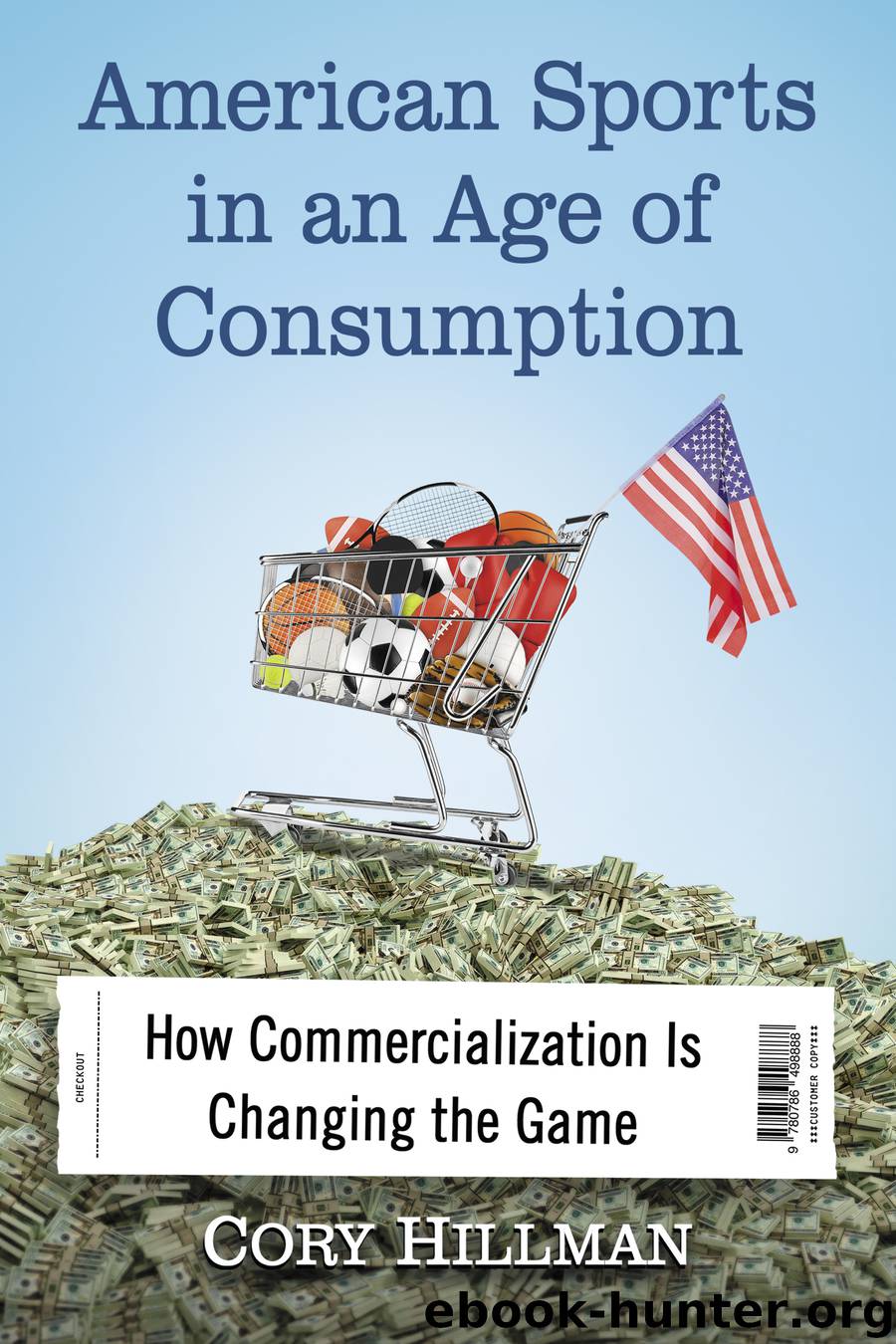American Sports in an Age of Consumption by Cory Hillman

Author:Cory Hillman
Language: eng
Format: epub
Publisher: McFarland
Published: 2016-07-20T16:00:00+00:00
While “drop ins” have long been a part of sports radio broadcasts, never before have they been so prominent. And the sponsoring companies who purchase them find them more valuable than 30-second commercials because they are inescapable. However, some announcers have begun to grow weary at the sheer number of sponsorship mentions, which they feel creates “clutter” in their broadcasts. Current Los Angeles Dodgers radio announcer Charlie Steiner states that “they’re not tough to do, but does it feel like it slows the pace of the game? Of course it does. From an announcer’s point of view, less is more.”51 Philadelphia Phillies radio announcer Scott Franzke laments, “You realize that they’re there to pay for the broadcast. So I’m certainly not begrudging that. But you still want some integrity in the broadcast.”52 According to New York Times journalist Richard Sandomir, “in this ecosystem, a walk is not only as good as a hit. It’s a sales opportunity.”53
Television sports broadcasts have also been the victim of the “drop in” glut while at the same time charging more of a premium for them due to their visual nature. This allows networks more advertising flexibility, including implanting “virtual ads” overtop signage areas and stadium arena scoreboards that can only be visible to the viewers at home. Beyond the profits, it also solves the problem of stadium sponsors receiving advertising they did not pay for while blocking out companies that are competitors with official league sponsors. Virtual ads are more common during marquee sporting events that command larger audiences, such as the Super Bowl, World Series, and MLB All-Star Game.
Sports sponsorship is obviously not new, and for a time in the early years of professional sports it fulfilled a philanthropic, rather than self-serving, purpose. The first evidence of a sporting event being sponsored by anyone occurred in 1887 when the French magazine named Velocipede financed an auto race.54 The purpose of early sponsorships such as these was to bankroll an event that otherwise would not have been possible. And companies and entrepreneurs did not expect to yield a financial return for doing so. Today, however, the purpose of sponsorship is to increase a company’s visibility and financial bottom line for events that could, in most cases, occur without sponsors. In many cases, the sponsorship culture of sports so heavily borders on the ridiculous that it could easily be mistaken for satire due to the control that sponsoring companies have regarding what athletes do and say and how their respective brands appear on television, in stadiums, and elsewhere.
Perhaps the most famous sponsorship nightmare occurred during the 1992 Summer Olympics when the “Dream Team” made up of NBA All-Stars—who previously were denied the opportunity to compete in the Olympics due to their professional status—won the gold medal. Michael Jordan, the poster child and darling of Nike, refused to wear the official United States Olympic Committee awards ceremony garb because it featured the logo of Nike’s competitor Reebok on the right shoulder.55 He then convinced all 11
Download
This site does not store any files on its server. We only index and link to content provided by other sites. Please contact the content providers to delete copyright contents if any and email us, we'll remove relevant links or contents immediately.
Life 3.0: Being Human in the Age of Artificial Intelligence by Tegmark Max(5405)
The Sports Rules Book by Human Kinetics(4213)
The Age of Surveillance Capitalism by Shoshana Zuboff(4118)
ACT Math For Dummies by Zegarelli Mark(3934)
Unlabel: Selling You Without Selling Out by Marc Ecko(3555)
Blood, Sweat, and Pixels by Jason Schreier(3532)
Hidden Persuasion: 33 psychological influence techniques in advertising by Marc Andrews & Matthijs van Leeuwen & Rick van Baaren(3416)
The Pixar Touch by David A. Price(3331)
Urban Outlaw by Magnus Walker(3305)
Bad Pharma by Ben Goldacre(3208)
Project Animal Farm: An Accidental Journey into the Secret World of Farming and the Truth About Our Food by Sonia Faruqi(3139)
Kitchen confidential by Anthony Bourdain(2969)
Brotopia by Emily Chang(2947)
Slugfest by Reed Tucker(2898)
The Content Trap by Bharat Anand(2837)
The Airbnb Story by Leigh Gallagher(2751)
Coffee for One by KJ Fallon(2518)
Smuggler's Cove: Exotic Cocktails, Rum, and the Cult of Tiki by Martin Cate & Rebecca Cate(2427)
Beer is proof God loves us by Charles W. Bamforth(2342)
